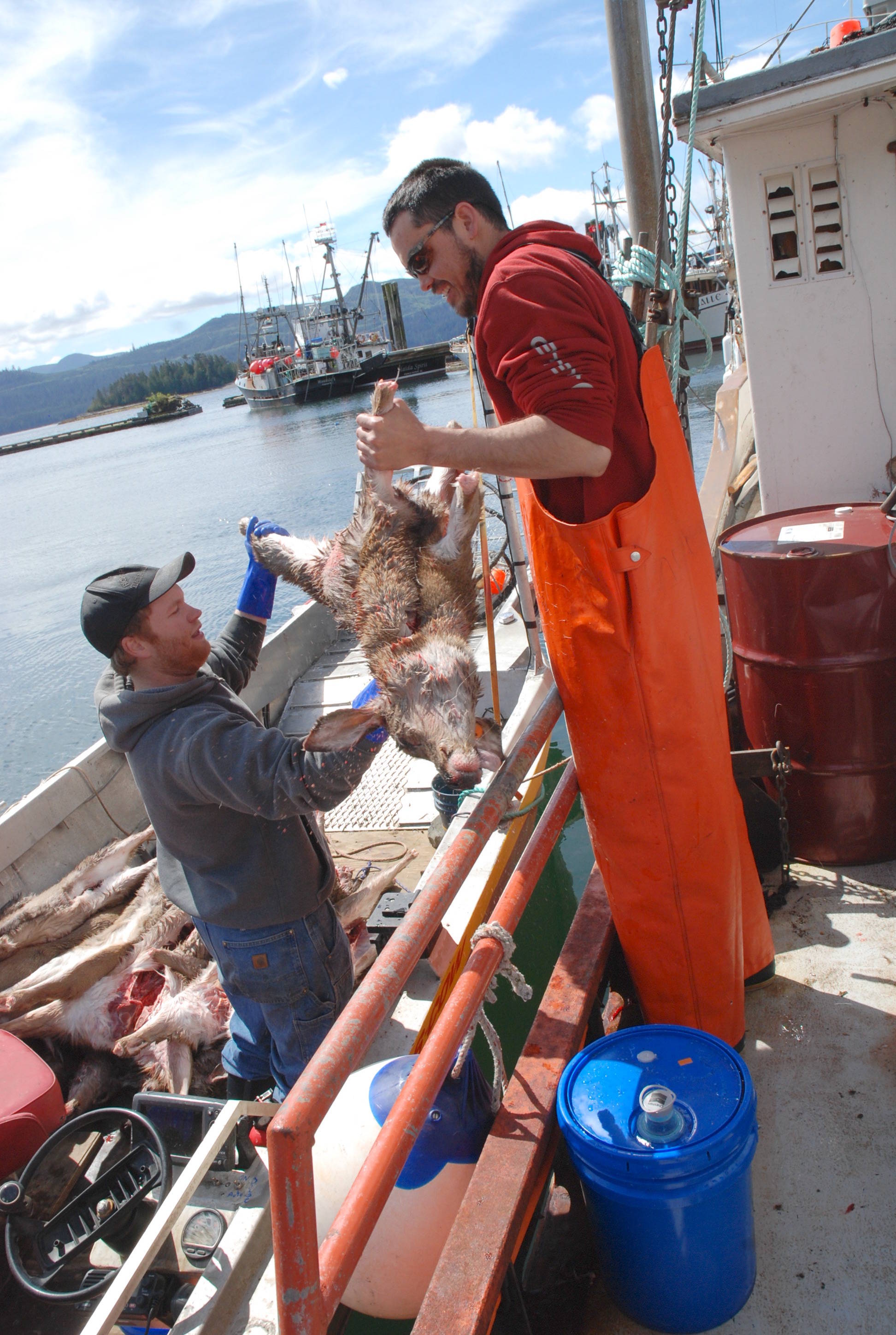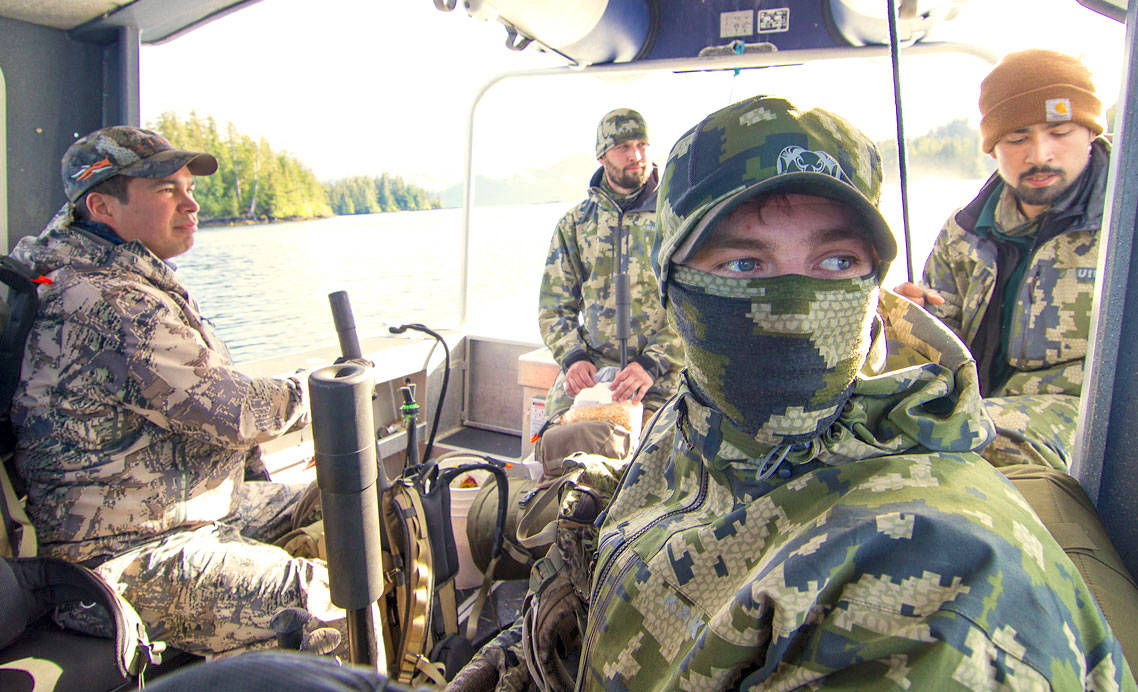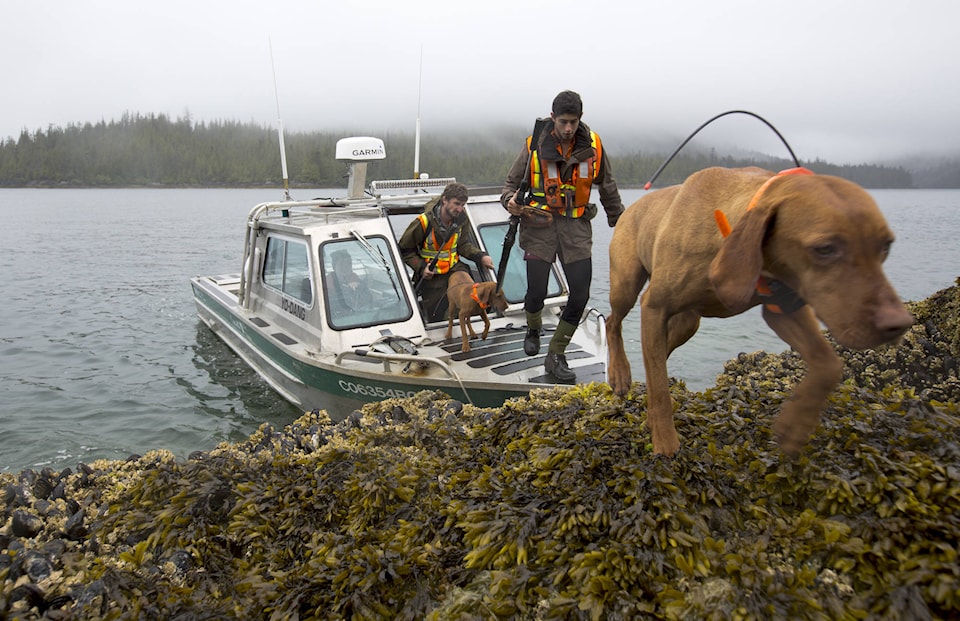On Ramsay Island, the sharpshooters said the deer moved more like goats — small and nimble enough to tuck and hide under blown-down logs.
For three months this summer, a team of visiting experts and specially trained locals tried to rid all the invasive Sitka deer off Ramsay and five nearby islands in Gwaii Haanas, where they were stripping away most plants in the forest understory and even thinning the soil.
Called Restoring Balance, Llgaay gwii sdihlda, the $5.7-million, three-year project involved hunting deer from helicopters, boats, and bait stations.
The team criss-crossed the islands with scent-sniffing dogs and scanned the shorelines with thermal-imaging gear. They ran DNA tests on the dead deer to learn their birthrate and where they came from.
When it was all over, 407 deer were killed on Ramsay Island alone, and another 25 total on the five smaller islands that lead to it like stepping stones.
On the edge of Lyell and Moresby Islands, the team culled another 138 deer to try and reduce their changes of swimming south again.
Now a whole new kind of shooting is underway on Ramsay.
“The conservation gains are already happening,” says Robyn Irvine, an ecologist and the project manager for Restoring Balance.
“What was amazing to see was that culturally significant plants like crabapple — there were these beautiful old crabapple groves on Ramsay — they were suckering and putting up shoots that for the first time weren’t getting eaten.”
Likewise, Devil’s club and huckleberries are growing freely for the first time in decades.
Big enough to have a complex watershed as well as steep slopes and seaside cliffs, there is hope that a deer-free Ramsay will act as a “medicine chest” full of traditional Haida plants.
But more work needs to be done before the team can say with 99 per cent certainty that every last deer is gone from Ramsay, and two of the five islands north of it.
“We were only able to do a partial grid search, and grid searches usually turn up one or two very wary animals, or smaller animals that can hide,” Irvine said.
On Ramsay, a full grid search means sending several hunters with specially trained dogs to survey the land spaced 50 to 150 metres apart. They carry GPS trackers to map exactly where they’ve walked, and keep searching until every gap is filled, always starting after it rains so the dogs have a clean slate of scents.
Then, after leaving the island for a while so any remaining deer drop their guard, the hunters do it all a second time, working perpendicular to the first lines.
Two surprises left the team with too little time to finish the grid searches in the original March to July timeline.
Irvine said the main issue is that the bait-station hunting — where hunters lured deer each night to carefully selected sites baited with corn or cedar boughs — did not work as well as hoped.
So the team added a strategy that has worked well for other restoration projects in Gwaii Haanas that have targetted invasive species. They hunted at night using infrared gear, spotlights, and a boat to quickly drop shooters off on shorelines wherever a deer was seen.
The next phase — a sharpshooter firing from a helicopter — proved very effective, taking 130 of the 407 deer killed on Ramsay.
The other surprise had nothing to do with actions on the ground.
Dog teams flying in from New Zealand had to come earlier than planned because most of Canada’s beekeepers get their queen bees flown in from New Zealand every spring, and for health reasons the bees can’t share a plane with any other animals.
“These are the things you learn when you’re shipping dogs internationally,” Irvine said, laughing. The early arrival meant the dogs had to sniff their way through a higher density of deer than expected.
Even so, Irvine said the project is a success so far. The ecosystem on Ramsay is clearly humming again, and terrestrial ecologist Carita Bergman and others are refining their deer interception strategy to keep it that way.
Other Gwaii Haanas staff, including Judson Brown, Jay Jones, Tauren Collinson, and James Bulbrook, got advanced training in sharpshooting and bait-station tactics. Elin Price managed safety while colleagues Nadine Wilson and Peter Dyment managed logistics for what was the largest, most complex restoration project Gwaii Haanas has run to date.
“We want to be able to have our own teams run these types of projects into the future,” Irvine said, so all that capacity-building will come in handy.
This fall, Haida youth will make deerskin drums and other crafts from some of the many deer that were harvested.
It took a lot of planning, but 1,400 pounds of venison was harvested and frozen for Haida Gwaii’s Local Food to Schools, Meals on Wheels, and adult day programs.
“That was something that we were really, really happy to see,” Irvine said.
Irvine also said that what inspired the entire project in the first place was ecological work done by Jean Louis Martin and others in the 1990s. The studies not only showed that invasive deer had caused the loss of songbirds, insects, plans, and soil structure in Gwaii Haanas, but that those losses were steadily getting worse.
On Ramsay and surrounding islands at least, that loss is now turning to gain.


